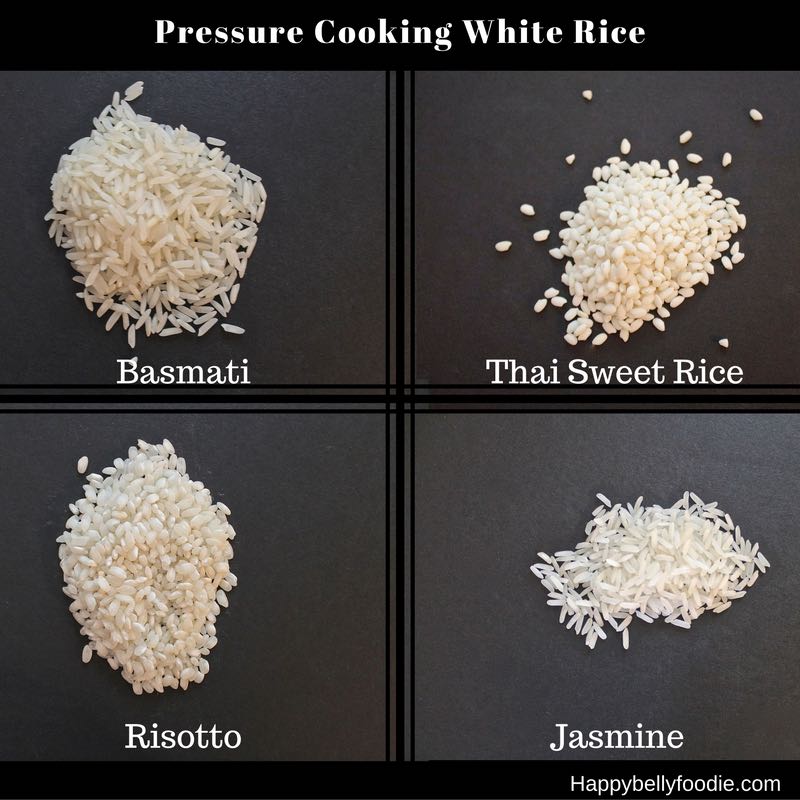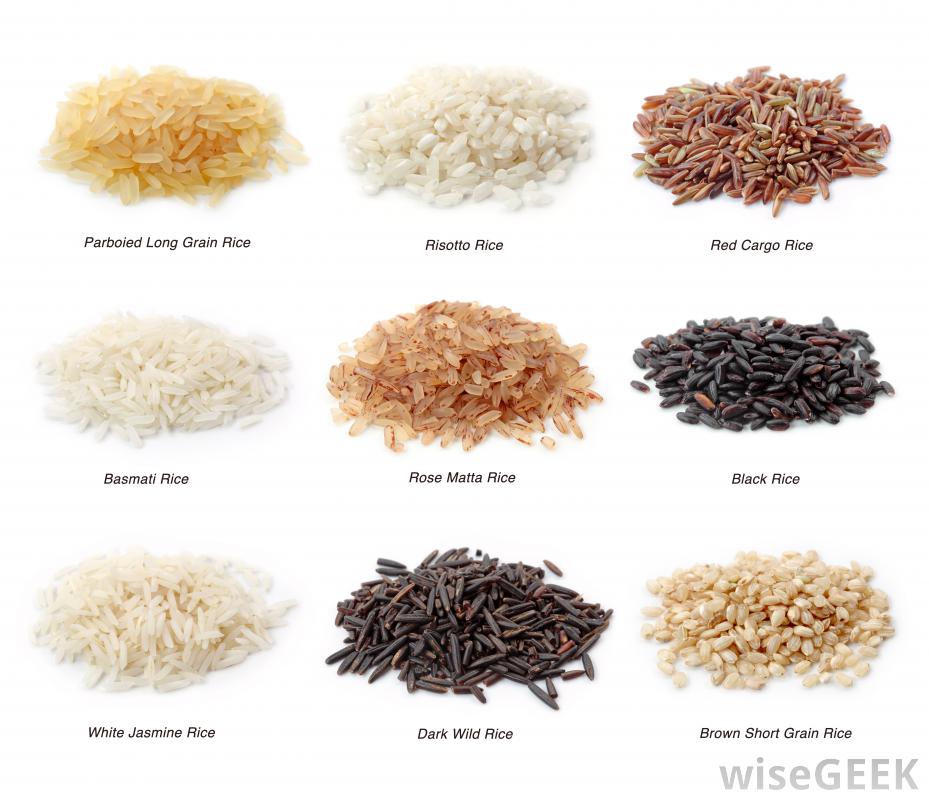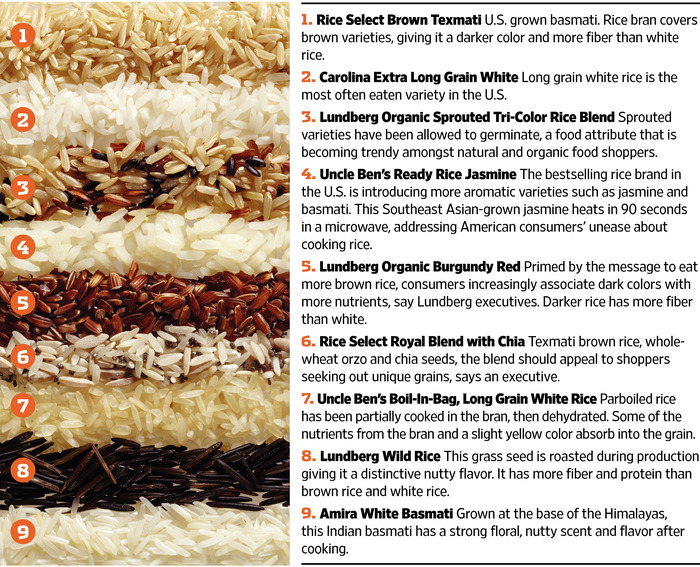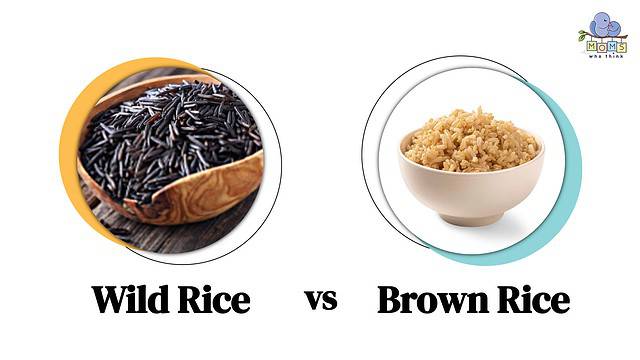White Rice Overview

White rice is a popular staple in many cuisines around the world. It is derived from the milling and refining of brown rice, resulting in a polished and white appearance. There are different types and varieties of white rice, including short-grain, medium-grain, and long-grain. It has a mild flavor and a fluffy texture when cooked. While white rice lacks some of the nutrients found in its brown rice counterpart, it is still a good source of carbohydrates and provides energy. This versatile grain is widely used in various dishes, from stir-fries to sushi.
White Rice: Types And Varieties
White rice comes in different types and varieties, each with its own unique characteristics and uses. The most common types of white rice include short-grain, medium-grain, and long-grain. Short-grain white rice is usually sticky and is commonly used in sushi and rice puddings. Medium-grain white rice is slightly less sticky and is often used in dishes like paella and risotto. Long-grain white rice has a fluffy texture and is perfect for everyday meals like stir-fries and pilafs. Other popular varieties of white rice include basmati, jasmine, arborio, and Valencia rice. Each variety has its own distinct flavor and is used in various cuisines around the world.
White Rice: Nutrition And Health Benefits
White rice is a good source of energy due to its high carbohydrate content. It is low in fat and cholesterol, making it a healthy option for those watching their weight or managing heart health. While it may not be as nutrient-dense as other types of rice, white rice still provides essential vitamins and minerals such as thiamine, niacin, and iron. It is also easily digestible, making it suitable for individuals with digestive issues. However, it is important to note that white rice is lower in fiber compared to other whole grain varieties.
Wild Rice Overview

Wild rice is not actually a true rice, but rather an aquatic grass with an edible grain. It is known for its longer grains, nutty earthy flavor, and thicker, more rigid hull compared to conventional white rice. Wild rice can be used in a wide range of dishes, adding a hearty whole grain element to meals. It can be found in the grain aisle of most supermarkets, with specialty shops often carrying multiple varieties. Hand-harvested wild rice or cultivated wild rice are both available options, with the latter being easier to find. Wild rice can also be purchased in bulk at health food stores.
Wild Rice: Origin And Cultivation
Wild rice, known scientifically as Zizania, is a type of aquatic grass that is native to North America. It is found in freshwater lakes, rivers, and marshes, particularly in the regions of Minnesota, Wisconsin, and the Great Lakes area. Historically, wild rice was an important staple food for Native American tribes, who harvested it by hand in canoes. Today, wild rice is also cultivated in controlled environments to meet the growing demand. Cultivated wild rice is typically grown in paddy fields that mimic its natural habitat, with controlled water levels and temperature. This allows for a more consistent and reliable supply of this nutritious grain.
Wild Rice: Nutritional Value And Unique Characteristics
Wild rice is known for its unique nutritional profile and distinctive characteristics. It is rich in essential minerals such as magnesium, phosphorus, and manganese. Additionally, wild rice is a good source of fiber, providing about 3 grams per 1/4 cup serving. This fiber content contributes to better digestion and helps maintain a healthy weight. Moreover, wild rice is gluten-free and low in fat, making it suitable for individuals with specific dietary restrictions. Its nutty and earthy flavor adds depth and complexity to dishes, making it a popular choice for cooking.
White Rice Processing

White rice undergoes a milling process to remove the outer husk, bran, and germ layers, resulting in a refined grain with a mild taste and smooth texture. The milling process involves several steps, including cleaning, hulling, polishing, and grading. Once the outer layers are removed, the rice is polished to give it a shiny appearance. This processing method extends the shelf life of white rice but also removes some of its nutritional value, including fiber, vitamins, and minerals. To enhance its flavor and texture, white rice is often cooked by steaming or boiling.
White Rice: Milling Process And Refinement
White rice undergoes a milling process to remove the outer husk, bran, and germ layers, resulting in a refined grain with a mild taste and smooth texture. The milling process involves several steps, including cleaning, hulling, polishing, and grading. Once the outer layers are removed, the rice is polished to give it a shiny appearance. This processing method extends the shelf life of white rice but also removes some of its nutritional value, including fiber, vitamins, and minerals. To enhance its flavor and texture, white rice is often cooked by steaming or boiling.
White Rice: Cooking Methods And Culinary Uses
White rice is versatile when it comes to cooking methods and is commonly prepared by boiling or steaming. Boiling white rice involves a simple process of adding rice and water to a pot and cooking until all the water is absorbed. Steaming white rice is a popular method, especially in Asian cuisines, where a steamer basket is used to cook the rice, resulting in a fluffy texture. White rice can be used as a side dish to complement various cuisines, such as stir-fries, curries, and stews, or as a main ingredient in dishes like rice pudding and fried rice. Its mild flavor allows it to absorb the flavors of the accompanying dishes, making it a versatile choice in many cultural cuisines.
Wild Rice Processing

Wild rice processing involves the harvesting and processing techniques used to bring the nutritious grain to our tables. Harvesting wild rice involves gathering the stalks when the grains are fully matured and drying them to remove excess moisture. Once dried, the harvested grains are threshed to separate them from the stalks. After threshing, the grains are then cleaned to remove any debris and impurities. They are then packaged and made available for culinary use. The unique flavor and texture of wild rice make it a popular choice for various dishes and culinary applications.
Wild Rice: Harvesting And Processing Techniques
Harvesting wild rice involves a careful process to ensure that the grains are gathered at their peak maturity. Typically, wild rice is hand-harvested from lakes and rivers using traditional methods. The harvested stalks are then dried to remove excess moisture before the grains can be threshed. Threshing involves separating the grains from the stalks, usually done by hand or with the help of a machine. Once the grains are separated, they undergo a cleaning process to remove any debris and impurities. Finally, the cleaned grains are packaged and made available for culinary use. Harvesting and processing wild rice requires skill and attention to detail to preserve its unique flavor and texture.
Wild Rice: Culinary Applications And Flavor Profile
Wild rice is a versatile ingredient that can be used in a variety of culinary applications. Its nutty and earthy flavor adds depth to dishes and pairs well with both savory and sweet ingredients. It can be used as a side dish, added to soups and stews, or incorporated into salads and stir-fries. Wild rice also complements meats, seafood, and vegetables, enhancing their taste and texture. Its unique flavor profile brings a distinct and satisfying element to any dish it is added to, making it a popular choice for those looking to elevate their culinary creations.
White Rice Vs Wild Rice: Comparing Grainy Differences

When comparing white rice and wild rice, there are noticeable differences in terms of texture, taste, and appearance. White rice is lighter in color and has a milder flavor compared to wild rice, which has a darker color and a stronger, more distinct taste. Additionally, wild rice has a chewier texture compared to the softer texture of white rice. While both types of rice can be used in recipes as substitutes for each other, it’s important to consider the flavor and texture profiles they bring to a dish.
Texture, Taste, And Appearance
When comparing white rice and wild rice, there are noticeable differences in terms of texture, taste, and appearance. White rice is lighter in color and has a milder flavor compared to wild rice, which has a darker color and a stronger, more distinct taste. Additionally, wild rice has a chewier texture compared to the softer texture of white rice. While both types of rice can be used in recipes as substitutes for each other, it’s important to consider the flavor and texture profiles they bring to a dish.
Nutritional Content And Health Impacts
Wild rice and white rice have distinct differences in their nutritional content, which can impact health. Wild rice is a nutrient-rich grain, providing higher amounts of dietary fiber, protein, and essential minerals such as magnesium and phosphorus compared to white rice. The high fiber content in wild rice promotes healthy digestion and helps in managing weight. Additionally, wild rice contains antioxidants that contribute to reducing inflammation and supporting overall well-being. On the other hand, white rice has a higher glycemic index, which may lead to spikes in blood sugar levels. It is important to consider these nutritional differences when making dietary choices.
Conclusion
https://www.youtube.com/watch?v=_cc0b3QPoGw&pp=ygUrV2hpdGUgUmljZSB2cyBXaWxkIFJpY2U6IEdyYWlueSBEaWZmZXJlbmNlcw%3D%3D

In conclusion, the choice between white rice and wild rice ultimately depends on individual preferences and dietary needs. White rice offers a smoother texture and is commonly used in Asian cuisine, while wild rice has a distinct look and chewier texture. From a nutritional standpoint, wild rice provides higher amounts of fiber, protein, and essential minerals compared to white rice. It also contains antioxidants that contribute to overall well-being. However, it’s important to consider the glycemic index and potential impact on blood sugar levels. Overall, selecting the appropriate rice variety can enhance the taste and nutritional profile of your dishes.
Choosing Between White Rice And Wild Rice
When it comes to choosing between white rice and wild rice, it ultimately depends on individual preferences and dietary needs. White rice is a versatile and commonly used ingredient with a smoother texture, making it ideal for Asian cuisine. On the other hand, wild rice offers a unique look, chewier texture, and higher nutritional value with more fiber, protein, and essential minerals. It also contains antioxidants that contribute to overall well-being. Consider your desired taste, cooking methods, and nutritional requirements to make the best choice for your dishes.
Your Preferred Rice Based On Preferences And Needs
When deciding between white rice and wild rice, it’s important to consider your personal preferences and nutritional needs. If you prefer a smoother texture and often cook Asian dishes, white rice may be your preferred choice. However, if you enjoy a chewier texture and want to incorporate more fiber, protein, and essential minerals into your diet, wild rice would be a better option for you. Additionally, wild rice contains antioxidants that contribute to overall well-being. Ultimately, your choice of rice should align with your taste preferences and dietary goals.
FAQ About White Rice Vs Wild Rice: Grainy Differences
Q: What is the main difference between white rice and wild rice?
A: The main difference lies in their grain type and processing methods. White rice is processed to remove the bran and germ layers, while wild rice retains these outer layers, making it more nutritious and flavorful.
Q: Which one is healthier, white rice or wild rice?
A: Wild rice is considered healthier than white rice because it is richer in fiber, antioxidants, and various nutrients like folate, zinc, and magnesium. White rice, being more processed, loses some of these nutrients during milling.
Q: How do the cooking methods differ between white rice and wild rice?
A: White rice typically cooks faster and requires a higher water-to-rice ratio compared to wild rice, which has a chewier texture and needs longer cooking time. Wild rice is often cooked with more water to achieve the desired tenderness.
Q: Can white rice and wild rice be used interchangeably in recipes?
A: While both types of rice can be used in various dishes, they have different textures and flavors. White rice is milder and fluffier, suitable for Asian dishes, while wild rice has a nuttier taste and works well in salads, soups, and side dishes.
Q: Are there any significant differences in the culinary applications of white rice and wild rice?
A: White rice is commonly used in a wide range of cuisines worldwide, particularly in Asian and Mediterranean dishes, as a staple grain. On the other hand, wild rice is often used in gourmet and health-conscious recipes to add a unique texture and flavor to the dish.

Panda Cafe offers delicious dining and takeout to Fairfax, VA.
Panda Cafe is a cornerstone in the Fairfax community and has been recognized for its outstanding Chinese cuisine, excellent service, and friendly staff.